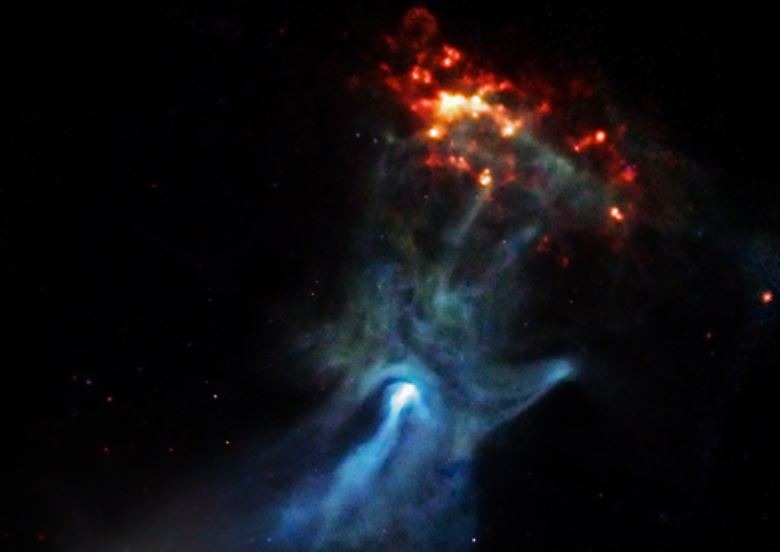NASA's Latest Image Of The Day Shows A 'Hungry Goblin' In Space
NASA has highlighted another particularly notable 'image of the day,' one featuring the pulsar PSR B1509-58 in the Circinus constellation. This particular celestial destination was first discovered in the early 1980s and has since been the source of images triggering pareidolia in viewers. The latest image shows what appears to be a giant goblin in space.
If you've ever lied back and stared at the clouds, seeing various characters and shapes, you're familiar with a phenomenon called pareidolia. Anyone has the potential to see things, such as animals or objects, in random data — ones that aren't really there, of course, but that your brain picks up on due to some degree of similarity.
That's the subject of NASA's newly shared image of the day, which is an image of the PSR B1509-58 spinning neutron star and its surrounding neighbors. The image observation was made by the agency's Chandra X-ray Observatory and the Wide-field Infrared Survey Explorer (WISE) telescope.

The combined data has produced an image filled with blue, purple, green, red, and orange colors — as well as an interesting shape resembling a large, bulbous face, mouth open, seemly staring at a band of energetic particles.
NASA points out that this isn't the first image of this part of space that has produced a pareidolia effect in viewers. Back in 2009, the agency released a different image of the neutron star, one that many said looks like a hand stretching toward the orange mass above it.
